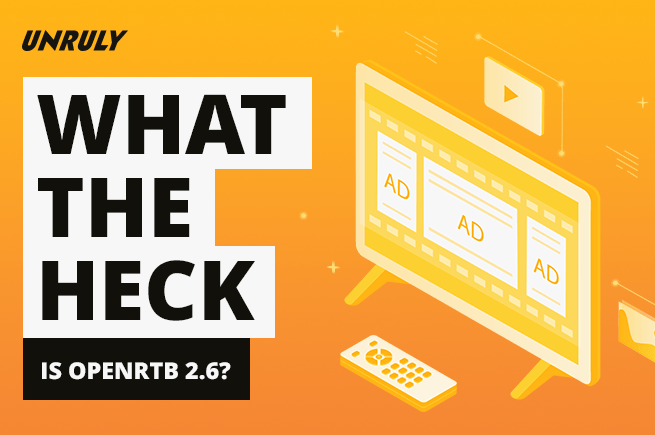What the Heck is OpenRTB 2.6?

Last April, the IAB Tech Lab released OpenRTB 2.6–its latest update to the OpenRTB technical standard. OpenRTB 2.6’s primary benefit is to simplify the process for buying and selling inventory through ad podding, thus making the ad experience much more like what we see on linear TV.
At Unruly, we’re ahead of the curve in implementing 2.6, and want to give you a quick overview to guide you through basics of what is key to know.
But first, a quick history lesson.
History of OpenRTB
Real-time-bidding (RTB) is a type of programmatic advertising that allows for the buying and selling of ad impressions at auction in real time. In the past, a major challenge of RTB was that buy side and sell side technology had trouble communicating basic information that was needed for buyers to choose whether to bid on an impression (e.g., creative size or publisher category). In 2012, the IAB Tech Lab released the OpenRTB protocol to standardize the way information is shared in order to create a seamless passing of info between the buy and sell side. There have been many versions of OpenRTB, and the latest is 2.6.
What’s so Great about 2.6?
In this version, there are a lot of benefits specifically for CTV. Here are the biggies to know:
Ad Podding Support
Unbeknownst to some, it was previously impossible to select ad positions within a commercial break in a single ad call via programmatic buying. This meant that ads were slated into breaks in randomized order—restricting publishers from applying a premium on coveted ad pod positions closer to content and limiting advertisers’ control over where their ads appear. OpenRTB 2.6 allows buyers to bid on specific slots within an ad break like the premium first ad slot.
Flexible Ad Podding Structures
Not all ads are the same length, which previously made it difficult for publishers to organize their pods. OpenRTB 2.6 now provides the flexibility for specific pods to be easily filled within structured, dynamic, or hybrid ad pods, all within one bid request.
- Structured: A fixed number of ads with specific ad lengths
- Dynamic: A fixed length of time for the ad break, with the flexibility to fill in the number of ads and their length into the slots
- Hybrid: A combination of structured and dynamic
With the rise of CTV/OTT viewership and the increased shift of linear spend to those platforms, brands want a more transparent buying experience, and publishers want to maximize the value of their inventory. OpenRTB 2.6 is bringing us even closer to these goals.
